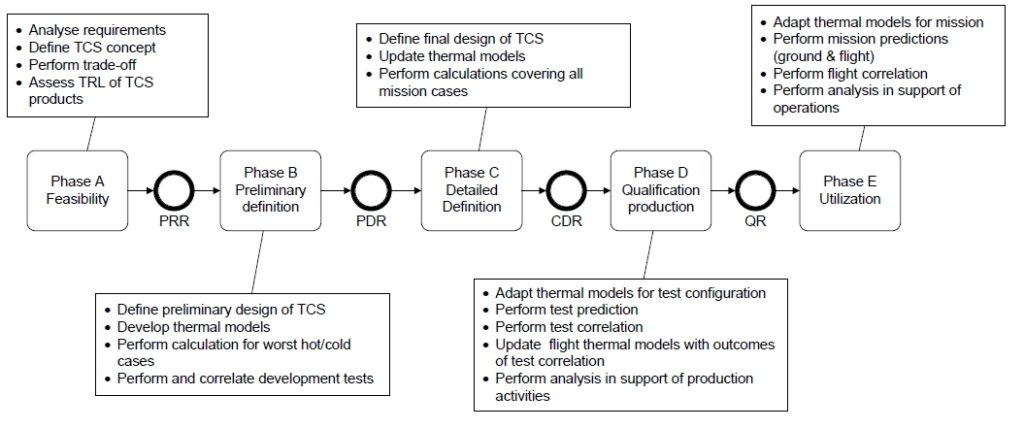Scope
1.1 Objectives and intended audience
This handbook is dedicated to the subject of thermal analysis for space applications. Thermal analysis is an important method of verification during the development of space systems. The purpose of this handbook is to provide thermal analysts with practical guidelines which support efficient and high quality thermal modelling and analysis.
Specifically, the handbook aims to improve:
- the general comprehension of the context, drivers and constraints for thermal analysis campaigns;
- the general quality of thermal models through the use of a consistent process for thermal modelling;
- the credibility of thermal model predictions by rigorous verification of model results and outputs;
- long term maintainability of thermal models via better model management, administration and documentation;
- the efficiency of inter-organisation collaboration by setting out best practice for model transfer and conversion.
The intended users of the document are people, working in the domain of space systems, who use thermal analysis as part of their work. These users can be in industry, in (inter)national agencies, or in academia. Moreover, the guidelines are designed to be useful to users working on products at every level of a space project – that is to say at system level, sub-system level, unit level etc.
In some cases a guideline could not be globally applicable (for example not relevant for very high temperature applications). In these cases the limitations are explicitly given in the text of the handbook.
Context
The use of computational analysis to support the development of products is standard in modern industry. Figure 1‑1 illustrates the typical thermal modelling and analysis activities to be performed at each phase of the development of a space system.
NOTE: More information about the project lifecycle can be found in ECSS‐M‐ST‐10 [RD5].
Figure 1‑1: Thermal analysis in the context of a space project
It can be seen that thermal models are used during all phases of the space system development to support a large number of activities, ranging from conceptual design right through to final in-flight predictions.
Indeed, in some cases, thermal analysis is the only way that certain thermal requirements can be verified; as physical tests are either too expensive or unrealisable. It is therefore vital for the credibility of the predictions made that the quality of the models is as high as possible.
This handbook supports ECSS-E-ST-31C “Space engineering – Thermal control general requirements”
Attachments
Md5 checksum .docx file = 173C2C9772D4B7E392493899610C72CF
Md5 checksum .pdf file = DD052741F61CCFCAC542189A0AC32520


